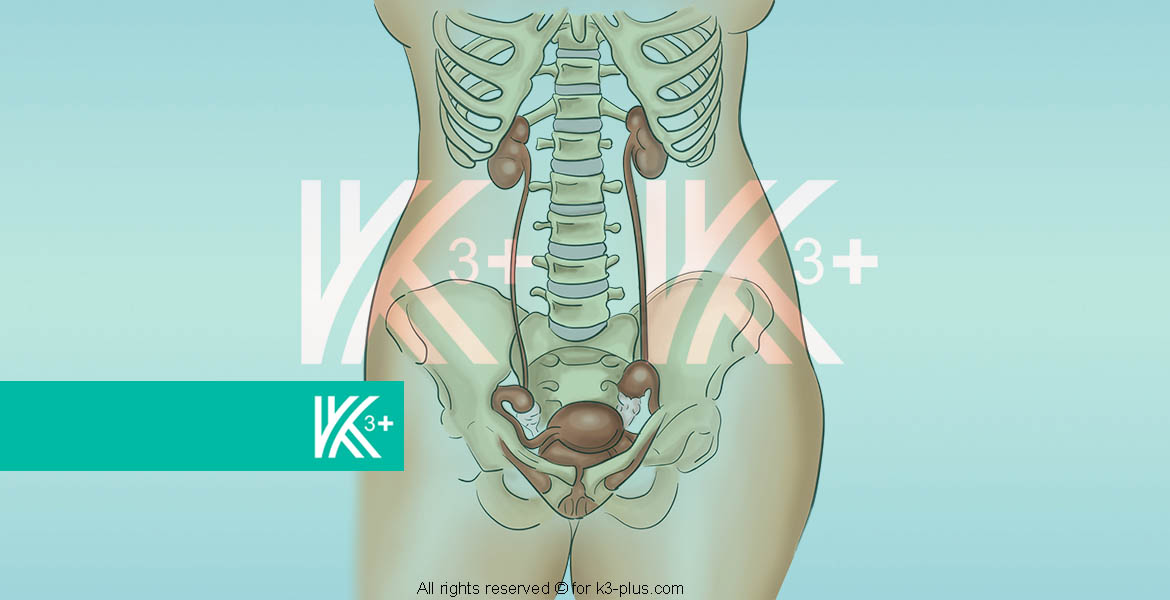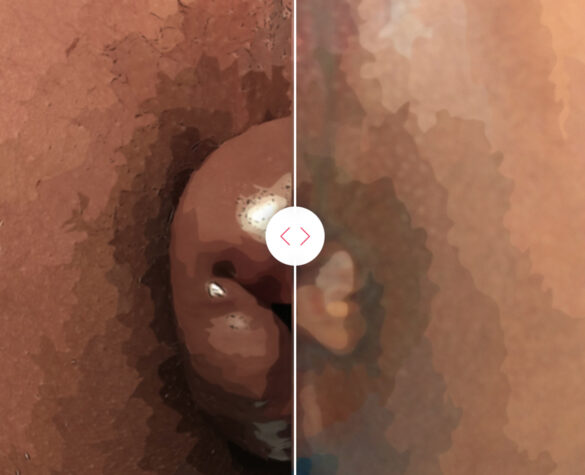Chronic Pelvic Pain



What is chronic pelvic pain?
Chronic pelvic pain is pain in the area below the navel and hips and it lasts for six months or longer.
Pain in the pelvis may be just a symptom of another disease or it may be an independent condition. If chronic pelvic pain is caused by another disease, treatment for that disease is what is needed to stop the pain.
But in most cases it is not possible to determine the main and only direct cause that causes pelvic pain, then the diagnosis of chronic pelvic pain is made and treatment of the symptoms of this disease, which is pain, is started by reducing it to make the practice of daily life easier.
Symptoms of chronic pelvic pain
The site of the pain is the entire pelvic area and not a small specific spot.
Severe and constant pain
Pain that occurs occasionally (intermittent periods)
Pain with fatigue
Pains with severe cramps
Heavy pressure and pressure in the depth of the pelvis
Additional symptoms
Pain during sexual intercourse
Pain during bowel movements or urination
Pain as a result of sitting for a long time
Other symptoms are possible
You may be uncomfortable with standing for a long time and the pain may go away when you lie down.
The pain can be mild and annoying.
The pain may be severe enough to prevent sleep and prevent you from going to work.
Causes of chronic pelvic pain
Chronic pelvic pain is a condition that is not simple, it may be due to multiple causes. These causes represent disorders and diseases and may be caused by only one disease. For example, a woman suffers from chronic pelvic pain and she also suffers from endometriosis and also interstitial cystitis, which results in chronic pelvic pain.
Some causes of chronic pelvic pain include
Endometriosis,
when tissue from the lining of the uterus grows and extends outside the uterus. When the deposits of this tissue respond to the start of the menstrual cycle and its symptoms begin to appear, which is an increase in the thickness of the lining of the uterus and then fragmentation and bleeding every month, and because this matter occurs outside the womb, the damaged blood and tissue cannot exit from the body through the vagina. Instead, blood and tissue remain inside the abdomen, causing painful cysts and fibrous bundles of scar tissue to appear.
Musculoskeletal system Problems
If there is a condition that affects the bones, joints and connective tissues, and this condition appears if there is a disease such as fibromyalgia, pelvic floor muscle tension disease, arthritis pubis (symphysis pubis) and hernia conditions, which may cause recurrence of suffering from chronic pelvic pain.
Chronic pelvic inflammatory disease.
This causes long-term infection, which is often sexually transmitted, and leads to scarring of the pelvic organs.
Remnants of the ovary.
In the case where the uterus, ovaries and fallopian tubes are removed, leaving even a small remnant of the ovary unintentionally inside causes cysts that cause severe pain in a later period.
Fibroids.
These tumors are non-cancerous uterine growths that cause a feeling of pressure or heaviness in the lower abdomen. It may cause severe pain, but this rarely happens if the blood supply stops, and it begins to die and decompose.
Irritable Bowel Syndrome.
Flatulence and constipation or diarrhea are symptoms of irritable bowel syndrome that cause a feeling of pelvic pain and pressure.
Painful bladder syndrome (interstitial cystitis).
A full bladder causes pain in the pelvis, and when the bladder is repeatedly full, the matter is always repeated, but these pains disappear when the bladder is emptied with urination.
Pelvic congestive syndrome.
Enlarged varicose veins in the uterus and ovaries cause pelvic pain, according to the opinion of many doctors. However, this opinion has medical opposition, due to statistics that show that most women with enlarged veins in the pelvic region do not suffer from pelvic pain.
Psychological factors.
A depression , chronic stress and memories of sexual abuse, physical or emotional problems , stress and deep likelihood of injury chronic pain may increase in the pelvis.
Diagnosing chronic pelvic pain
Tests to diagnose chronic pelvic pain
In order for the doctor to be able to diagnose the causes of chronic pelvic pain, he asks for tests or examinations, noting that the testing process and examinations to find the cause of chronic pelvic pain is a long process and the direct cause may never be reached, but the following are the required tests:
Pelvic test.
The result of the test reveals signs of any infection, protrusion, abnormal growth, or cramping of the pelvic floor muscles, as the doctor examines areas of pain.
Note: It is necessary for you to inform the doctor during the examination if you feel pain similar to what you feel at other times, as this is part of the examination.
Lab tests.
Blood and urine tests are useful to make sure that there are no infections such as chlamydia and gonorrhea. Or a urinary tract infection.
Ultrasound.
This examination is to ensure that there are no lumps or cysts in the ovaries, womb, or fallopian tubes by taking high-resolution images of the body’s structures.
Photography in several types.
X-rays, computerized tomography (CT) scans, or magnetic resonance imaging (MRI) all help to search for and detect any abnormal growths or bumps.
Laparoscopy.
It is a surgery that involves making a small incision in the abdomen that is sufficient to insert a thin tube with a laparoscopy camera. The camera displays images of the pelvis and examines tissues and organs in the pelvic area to distinguish any bump or abnormal signs that may represent an infection. Laparoscopy is useful for detecting two important diseases, chronic pelvic inflammation and endometriosis.
Treating chronic pelvic pain
In the event that a condition that causes chronic pelvic pain is identified, then that condition is treated if the doctor can determine a specific cause, otherwise the goal of treatment is to reduce pain and make the practice of daily life easier, and the ideal treatment includes implementing a range of treatments.
Chronic pelvic pain medications
pain killers.
Aspirin, ibuprofen (Advil, Motrin IB, others) and acetaminophen (Tylenol, others) may partially help relieve pain. But it rarely solves the problem alone.
Hormonal treatments.
Chronic pelvic pain in many women is related to the stages of the menstrual cycle and the hormonal change accompanying it, so the pain increases on certain days of the cycle due to the influence of hormones, in this case the contraceptive pill or other hormonal drugs help relieve pain.
Antibiotics.
If a concomitant disease is diagnosed for which an antibiotic is suitable, the doctor may prescribe it to treat it.
Antidepressants.
Tricyclic antidepressants such as amitriptyline and nortriptyline (Pamelor) and others, relieve pain and reduce depression, so they are appropriate even if the patient does not suffer from depression.
Other treatments for chronic pelvic pain
Natural therapy.
Physiotherapists can search and find tight muscles and work to relax them to relieve pain, and they can also do exercises that help develop a coping strategy with pain. A physical therapist also identifies pain points using a TENS instrument and delivers electrical impulses to nearby nerve pathways. . And there is a psychological technique called biofeedback that helps you identify areas of tight muscles so that you can learn to relax those areas.
Nerve stimulation (spinal cord stimulation).
Another treatment method is to prevent the feeling of pain, by preventing the nerve from transmitting the pain signal to the brain, by implanting a device that closes the nerve pathways until it allows it to transmit the pain signal from the pelvis to the brain, so that the pain is not felt.
Psychotherapy.
Psychotherapy is on two levels. The first level is if chronic pelvic pain is related to the psychological causes mentioned above, then it will be useful to talk to psychologists. The second level is aimed at developing pain coping strategies.
Surgery
Surgery can solve the problems that cause chronic pelvic pain, if any, as follows:
Laparoscopic surgery.
For people with endometriosis, the removal of adhesions or the removal of endometrial tissue, which is performed by laparoscopic surgery. During surgery, the doctor inserts a thin tube equipped with a camera through a small incision next to the navel, and the camera inserts cutting and pulling tools, and the uterine tissue is removed and withdrawn through one of the additional small incisions that are made.
Hysterectomy.
Hysterectomy, salpingectomy, or oophorectomy, which is performed in rare complex cases These solutions have serious health consequences associated with their surgeries, which the doctor discusses with the patient in detail
Rehabilitation programs for chronic pelvic pain
Rehabilitation is the last step that takes place after completion of possible treatments for chronic pelvic pain, after which entry into a pain rehabilitation program is considered
Chronic Pelvic Pain FAQs
I have hemorrhoids, and I am afraid of treating them because of my fear of chronic pelvic pain due to errors in the surgery, is my behavior correct?
I have chronic pelvic pain and have been taking depression medication on a daily basis for two years, have it continued?
I feel pain in the entire pelvic area, the pain comes to me several times a day and it is severe, but the pain center is close to the anus sometimes only. Do I have to see a gynecologist, esoteric, or colon and rectum?
Is chronic pelvic pain disease may affect men, because I have pain in the entire pelvic area that has been going on for nearly a month with a feeling of fatigue?
Chronic Pelvic Pain Cases
Patients who previously lived suffering from hemorrhoids, fistulas, and hair bags, and received treatment by Dr. Khaldoun. We list the symptoms they suffered and the treatment that was provided, which could be useful for you.




